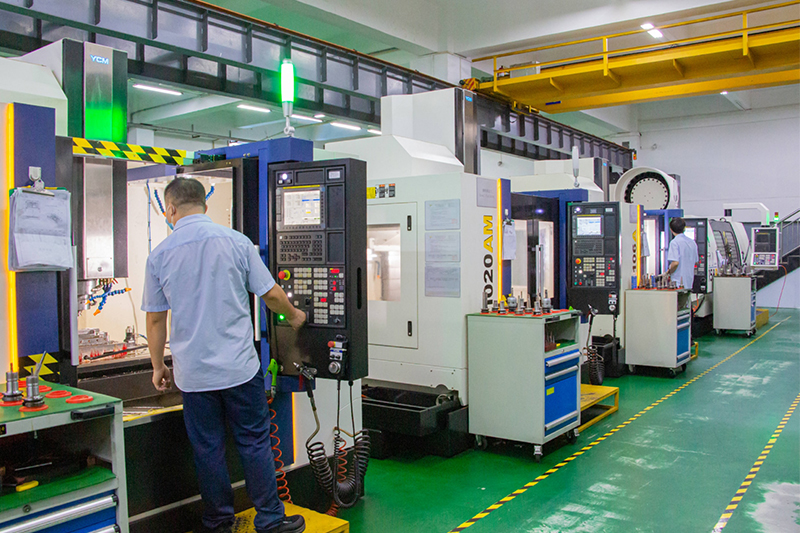What is the plastic mold processing process?
Plastic mold processing process refers to the whole process of the designed plastic mold from raw materials to final molding, and the specific process mainly includes: mold design – material preparation – processing and manufacturing – heat treatment – assembly and debugging – trial mold production – mass production.
The following details the plastic mold processing process, mainly including the following 7 aspects:
1, mold design: First of all, according to the product design requirements and use needs, plastic mold design. This includes mold structure design, size determination, material selection and so on. Mold design needs to consider the shape, size, structure of the product and the characteristics of the injection molding process.
2, material preparation: according to the requirements of mold design, choose the appropriate mold material. Commonly used mold materials are steel and aluminum alloy. Steel has high hardness and wear resistance, suitable for mass production; The aluminum alloy has lower cost and processing difficulty, and is suitable for small batch production. According to the size and structure of the mold design, the selected material is cut into the corresponding blank.
3, processing and manufacturing: the cut mold material for rough processing and finishing. Roughing, including turning, milling, drilling and other processes, is used to process the mold material into a preliminary shape. Finishing includes grinding, wire cutting, electric discharge and other processes to process the mold material into the final shape and size.
4, heat treatment: For some need to improve the hardness and wear resistance of the mold, but also need to be heat treatment. Common heat treatment methods are quenching, tempering, etc., by controlling the temperature and time to change the structure and performance of the mold material.
5, assembly and debugging: the processed mold parts are assembled, and debugging. During the debugging process, it is necessary to check whether the various parts of the mold are installed correctly and whether they can operate normally. At the same time, it is also necessary to adjust and optimize the mold to ensure the quality of the final product and production efficiency.
6, trial mold production: after the completion of mold debugging, trial mold production. Trial production is to verify the performance and stability of the mold, and whether the quality and size of the product meet the requirements. In the process of mold trial production, it is necessary to adjust and optimize the injection molding process parameters in order to obtain the best injection molding effect.
7, mass production: After the trial production verification, you can carry out mass production. In the mass production process, it is necessary to rationally arrange production plans according to the product demand and market demand, and carry out production management and quality control to ensure the stable supply and quality of products.
To sum up, the plastic mold processing process includes: mold design, material preparation, processing and manufacturing, heat treatment, assembly and debugging, trial mold production and mass production. Each link needs to be strictly controlled and managed to ensure the quality of the final product and production efficiency.
塑胶模具加工工艺流程是什么样的?
塑胶模具加工工艺流程是指将设计好的塑胶模具从原材料到最终成型的全过程,具体流程主要包括:模具设计-材料准备-加工制造-热处理-组装调试-试模生产-批量生产。
下面详细介绍塑胶模具加工工艺流程,主要包含以下7个方面:
1、模具设计:首先,根据产品的设计要求和使用需求,进行塑胶模具的设计。这包括模具结构设计、尺寸确定、材料选择等。模具设计需要考虑产品的形状、尺寸、结构以及注塑成型工艺的特点。
2、材料准备:根据模具设计的要求,选择适合的模具材料。常用的模具材料有钢材和铝合金等。钢材具有较高的硬度和耐磨性,适用于大批量生产;而铝合金则具有较低的成本和加工难度,适用于小批量生产。根据模具设计的尺寸和结构,将所选材料切割成相应的坯料。
3、加工制造:将切割好的模具材料进行粗加工和精加工。粗加工包括车削、铣削、钻孔等工序,用于将模具材料加工成初步的形状。精加工则包括磨削、线切割、电火花等工序,用于将模具材料加工成最终的形状和尺寸。
4、热处理:对于一些需要提高模具硬度和耐磨性的情况,还需要进行热处理。常见的热处理方法有淬火、回火等,通过控制温度和时间来改变模具材料的组织结构和性能。
5、组装调试:将加工好的模具零部件进行组装,并进行调试。调试过程中,需要检查模具的各个部分是否安装正确,是否能够正常运行。同时,还需要进行模具的调整和优化,以确保最终产品的质量和生产效率。
6、试模生产:在模具调试完成后,进行试模生产。试模生产是为了验证模具的性能和稳定性,以及产品的质量和尺寸是否符合要求。在试模生产过程中,需要进行注塑工艺参数的调整和优化,以获得最佳的注塑成型效果。
7、批量生产:经过试模生产验证无误后,可以进行批量生产。在批量生产过程中,需要根据产品的需求和市场需求,合理安排生产计划,并进行生产管理和质量控制,以确保产品的稳定供应和质量。
总结起来,塑胶模具加工工艺流程包括:模具设计、材料准备、加工制造、热处理、组装调试、试模生产和批量生产等环节。每个环节都需要严格控制和管理,以确保最终产品的质量和生产效率。
Post time: Aug-02-2023





